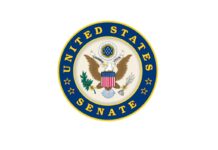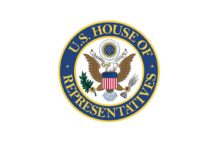by Tony Gerlach
For several years, tribal casinos have been looking ahead to the implementation of Governmental Accounting Standards Board (GASB) Statement No. 87, Leases. GASB 87 essentially ends off-balance sheet financing by requiring entities to recognize most leased assets on their balance sheets as right-to-use assets with associated liabilities. Effective for fiscal years ending June 30, 2022 and thereafter, most tribal casinos have completed (or at least begun) their implementation process. This brings to fruition the implementation of one of the most substantive new GASB standards seen in years. Tribal casino accounting and finance departments will now surely be given a break before the next significant implementation, right? Unfortunately not.
Enter GASB Statement No. 96, Subscription-Based Information Technology Arrangements, or “SBITAs.” This new standard is effective just one year post-GASB 87 (fiscal years ending June 30, 2023 and thereafter). Think of GASB 96 similarly to GASB 87, just related to IT software subscription agreements rather than tangible assets. Fortunately, many concepts and provisions incorporated in GASB 87 were carried over to GASB 96. Common examples of SBITAs include cloud-based accounting, gaming, and ERP systems. These, too, will now require recognition on the balance sheet as subscription assets and associated subscription liabilities.
Definition – Under GASB 96, a SBITA is a contract that conveys control of the right to use another party’s (a SBITA vendor’s) IT software, alone or in combination with tangible assets (the underlying IT assets), as specified in the contract for a period of time in an exchange or exchange-like transaction. The similarities to GASB 87 are apparent. However, the GASB did provide one notable exception with GASB 96: contracts that include a combination of both tangible assets and a software component can be excluded from following GASB 96 if the software component is deemed to be “insignificant” compared to the cost of the tangible asset.
Subscription Term – Similarities also exist when defining the subscription term. Like GASB 87, short-term subscriptions with a maximum possible term of twelve months at the commencement of the subscription term are excluded from the provisions of GASB 96. In defining the subscription term, the period includes the length of time the Casino has the right to use the underlying SBITA, inclusive of any options to extend (when reasonably certain to be exercised) and terminate (if reasonably certain not to be exercised).
Financial Statement Impact – Recognition on the balance sheet will include a right-to-use subscription asset and an associated subscription liability. The initial subscription liability is recognized at the present value of the total subscription payments expected to be made during the subscription term, discounted using the interest rate charged by the vendor (or the casino’s incremental borrowing rate if the vendor interest rate is not readily determinable). The subscription asset is recognized as the initial present value of the subscription liability, plus any payments made to the vendor before the beginning of the subscription term, plus any capitalizable implementation costs, and minus any vendor incentives received from the SBITA vendor at or before the commencement of the subscription term. The subscription asset is then amortized over the shorter of the subscription term or the useful life of the underlying asset. Balances for the subscription asset and subscription liability will need to be presented separately in the financial statements, with corresponding footnote disclosures.
Preparing for Implementation – Tribal casinos may follow a similar strategy and timeline for implementing GASB 96 like was used for GASB 87. In fact, tribal casinos that have not yet begun the implementation process for GASB 87 may consider early-implementing GASB 96 because of the many similarities. The first step in the implementation process should include a comprehensive search of the entity’s records to identify a complete population of potential SBITA agreements. After identifying the population, each SBITA must be analyzed to determine which GASB standard is applicable: GASB 96, GASB 87, or neither. Again, considerations relate to the length of the term, and if the IT software component is deemed insignificant in a combined contract with tangible assets. At that point, the subscription asset and subscription liability balances can be determined. One more important note: provisions of the Standard are required to be applied retroactively. Meaning, in comparative financial statements, balances should be restated for all fiscal years presented. This may potentially include a restatement of beginning net position in the earliest fiscal year presented. Casinos that present management’s discussion and analysis may need to consider calculating this information for three years.
In a nutshell, there is no rest for the weary. A year after implementing the new leasing standard for tangible capital assets, a similar process now must be followed for subscription-based IT software. However, many similar provisions and concepts from GASB 87 follow over to GASB 96, which might ease the implementation process some.
Tony Gerlach is Principal of REDW. He can be reached by calling (602) 730-3612 or email [email protected].















































